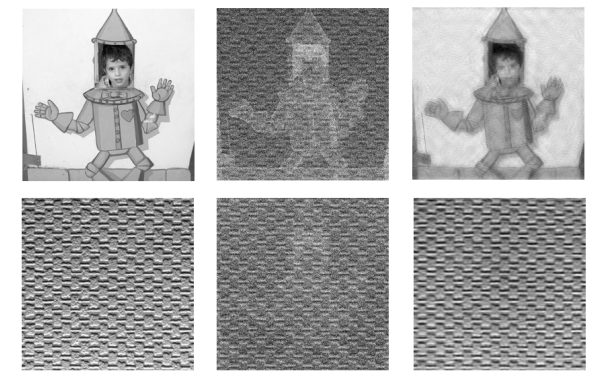| Authors: | J. Bobin, Y. Moudden, J.-L. Starck, M. Elad |
| Journal: | IEEE |
| Year: | 2006 |
| Download: | IEEE |
Abstract
This letter describes a new method for blind source separation, adapted to the case of sources having different morphologies. We show that such morphological diversity leads to a new and very efficient separation method, even in the presence of noise. The algorithm, coined multichannel morphological component analysis (MMCA), is an extension of the morphological component analysis (MCA) method. The latter takes advantage of the sparse representation of structured data in large overcomplete dictionaries to separate features in the data based on their morphology. MCA has been shown to be an efficient technique in such problems as separating an image into texture and piecewise smooth parts or for inpainting applications. The proposed extension, MMCA, extends the above for multichannel data, achieving a better source separation in those circumstances. Furthermore, the new algorithm can efficiently achieve good separation in a noisy context where standard independent component analysis methods fail. The efficiency of the proposed scheme is confirmed in numerical experiments.

